The Art of Quilting: Exploring Different Techniques
Quilting is not just a craft; it’s a passion that weaves together stories, memories, and creativity. Whether you're a seasoned quilter or just starting out, the world of quilting offers a canvas for your imagination to run wild. As you embark on this journey, you'll discover that quilting is a blend of art and technique, where every stitch has the power to transform simple fabric into a masterpiece. From the rhythmic sound of the sewing machine to the vibrant colors of fabric, the experience is as fulfilling as it is beautiful.
So, what makes quilting such a cherished art form? For many, it’s the sense of community and tradition that surrounds it. Quilters often gather in groups, sharing tips, patterns, and laughter. They pass down techniques from generation to generation, creating a rich tapestry of history that is both personal and collective. Imagine sitting around a table with friends, each person contributing their unique flair to a quilt that will one day tell a story of friendship and creativity.
As we dive deeper into the various techniques of quilting, you’ll find that each method brings its own charm and complexity. From the basic techniques that lay the foundation for your quilting skills to the advanced methods that unleash your creative potential, there’s something for everyone. Quilting can be as simple or as intricate as you desire, allowing you to express your style, emotions, and even your dreams through fabric.
Throughout this article, we will explore the fundamental techniques of quilting, delve into the enchanting world of patchwork, and examine the materials that can elevate your projects. So grab your fabric, thread, and sewing machine, and let’s embark on this colorful journey together!
Before we can create stunning quilts, it's essential to understand the basic techniques that form the backbone of quilting. Mastering these foundational skills will not only boost your confidence but also pave the way for more advanced methods down the line. Key techniques include piecing, appliqué, and quilting. Each of these plays a vital role in the quilt-making process.
Piecing involves sewing together different fabric pieces to create a larger design. It’s like putting together a puzzle, where each piece must fit perfectly to achieve the desired outcome. Then there's appliqué, where fabric shapes are sewn onto a larger piece, adding depth and interest to your quilt. Finally, quilting is the technique that binds everything together, adding texture and durability. Think of it as the finishing touch that transforms your quilt from a collection of fabrics into a cohesive work of art.
Patchwork quilting is a delightful technique that allows quilters to showcase their creativity by sewing together various fabric pieces. It’s a vibrant way to create intricate designs that can tell a story or evoke a feeling. In this section, we’ll discuss popular patchwork patterns and provide tips on selecting fabrics that complement each other.
When it comes to patchwork patterns, the possibilities are endless. Some of the most beloved patterns include:
- Nine-Patch: A classic pattern that consists of nine squares, perfect for beginners.
- Log Cabin: A versatile design that can create a stunning visual effect, resembling a cozy cabin.
- Flying Geese: A pattern that gives a sense of movement and direction, ideal for dynamic designs.
Each pattern contributes uniquely to the overall aesthetic of a quilt, allowing quilters to express their individuality and style.
Selecting the right fabrics is crucial in patchwork quilting. It’s not just about picking pretty colors; it’s about understanding color theory and how different fabrics interact with one another. A well-thought-out fabric combination can elevate your quilt from ordinary to extraordinary. Consider the following tips:
- Choose a color palette that resonates with you.
- Mix patterns and solids for visual interest.
- Think about the scale of prints; larger prints can dominate, while smaller prints can blend.
Accurate cutting is essential for successful patchwork. Precision in cutting fabric pieces ensures that they fit together seamlessly. Invest in quality tools like rotary cutters and cutting mats, and always measure twice before cutting. Remember, a little patience goes a long way in achieving that perfect quilt!
Once you've mastered the basics, it’s time to explore advanced techniques that will take your quilting skills to new heights. Techniques such as free-motion quilting and paper piecing allow for greater creativity and complexity in your designs. Free-motion quilting lets you create intricate patterns without the constraints of a sewing machine’s feed dogs, while paper piecing enables precision in creating complex shapes and designs.
Quilting isn’t limited to just cotton fabrics. Exploring different materials can add unique textures and styles to your quilts. For instance, using wool can create warmth, while flannel can offer a soft, cozy feel. Each material brings its own characteristics, allowing you to experiment and find what works best for your projects.
The choice of batting can significantly affect a quilt's warmth and drape. Batting comes in various materials, including cotton, polyester, and wool. Each type has its own benefits, so consider your project’s needs when selecting the right batting. For instance, cotton batting offers breathability, while polyester batting can provide extra loft.
Adding embellishments like beads, embroidery, or appliqué can enhance your quilt. These creative elements allow you to personalize your projects, making them truly one-of-a-kind. Think of embellishments as the icing on the cake; they add that special touch that makes your quilt stand out.
Q: What is the best fabric to use for beginners?
A: Cotton is highly recommended due to its ease of use and availability in a wide range of colors and patterns.
Q: How do I prevent my quilt from puckering?
A: Ensure you’re using the right tension on your sewing machine and consider using a walking foot for even feeding of the fabric.
Q: Can I quilt without a sewing machine?
A: Absolutely! Hand quilting is a traditional method that many quilters still enjoy, adding a personal touch to their quilts.
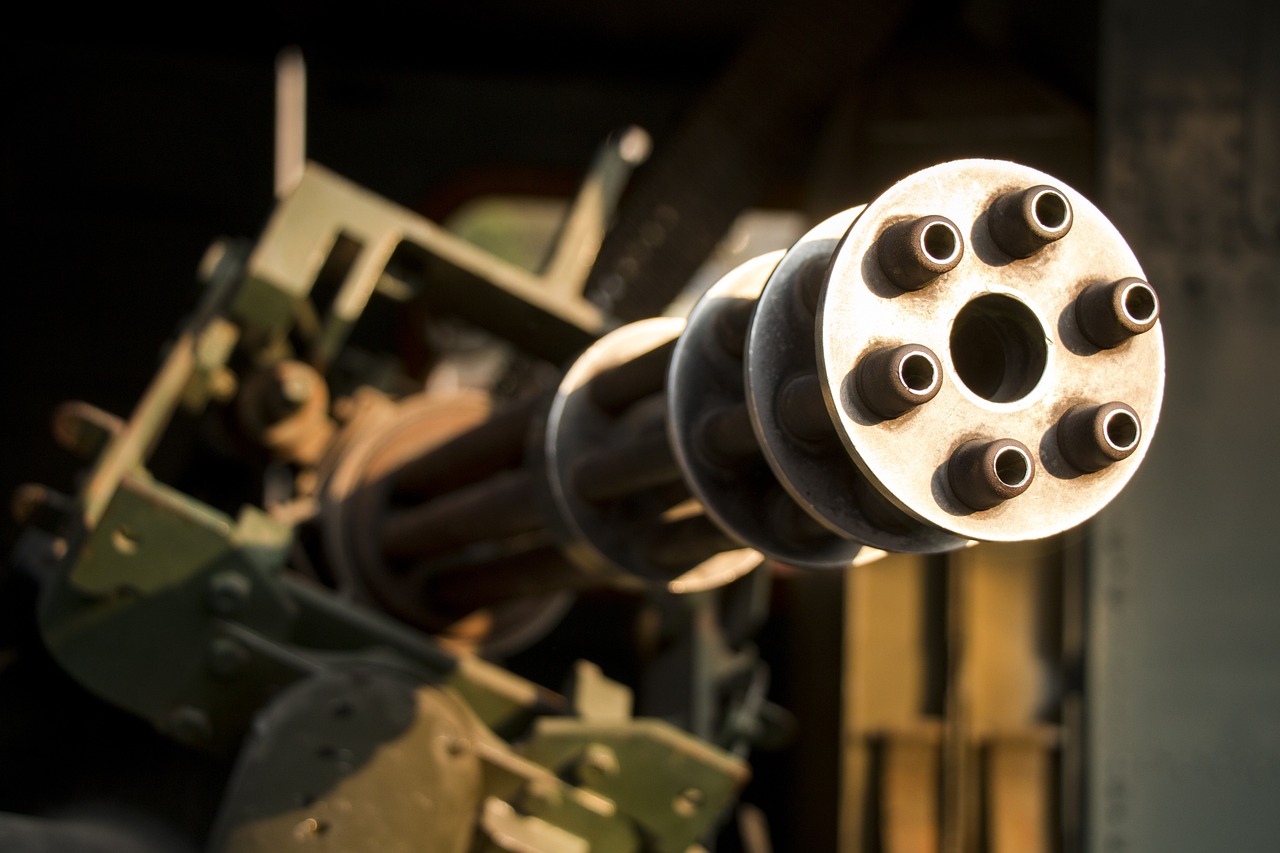
Understanding Basic Quilting Techniques
Quilting is an art form that combines creativity with craftsmanship, and understanding the basic techniques is your first step toward creating stunning quilts. The foundational techniques of quilting include piecing, appliqué, and quilting itself. Mastering these skills not only enhances your quilting ability but also opens the door to more advanced methods. Each technique has its unique charm and application, making it essential for both beginners and seasoned quilters to grasp these concepts.
Piecing is the technique of sewing together pieces of fabric to create a larger design. This is often the first step in quilt-making. Imagine creating a beautiful mosaic, where each fabric piece represents a tile in your design. The key to successful piecing lies in accurate cutting and sewing. You want your seams to be precise, ensuring that your quilt top lies flat and looks polished. Tools such as rotary cutters and cutting mats are invaluable in achieving this precision.
Next up is appliqué, which adds a layer of dimension and artistry to your quilts. This technique involves sewing a piece of fabric onto another fabric, usually the quilt top, to create shapes or designs. Think of it like adding a splash of color to a black-and-white photograph. There are various methods of appliqué, including hand-sewing and machine-sewing, each offering different aesthetics and challenges. For instance, hand-appliqué provides a cozy, handcrafted feel, while machine-appliqué allows for quicker projects with a polished finish.
Then, we have the quilting process itself. This is where the magic truly happens! Quilting involves stitching through the layers of the quilt sandwich—top fabric, batting, and backing—to hold everything together. It can be as simple as straight-line quilting or as complex as free-motion quilting, where you have the freedom to create intricate designs. The choice of quilting technique can dramatically affect the look and feel of your finished quilt. For example, free-motion quilting allows for a more artistic expression, akin to drawing with thread, while straight-line quilting can give a modern, minimalist vibe.
To summarize, understanding these basic quilting techniques is crucial for anyone looking to delve into the world of quilting. Here’s a quick overview:
| Technique | Description | Tools Needed |
|---|---|---|
| Piecing | Sewing fabric pieces together to form a quilt top. | Rotary cutter, cutting mat, sewing machine |
| Appliqué | Attaching fabric shapes onto a quilt top. | Fabric scissors, needle, thread, sewing machine (optional) |
| Quilting | Stitching through all layers to hold them together. | Sewing machine, quilting foot, thread |
By mastering these techniques, you lay the groundwork for creating beautiful quilts that reflect your personal style and creativity. Don't be afraid to experiment and make mistakes; after all, every quilt tells a story, and yours is just beginning!
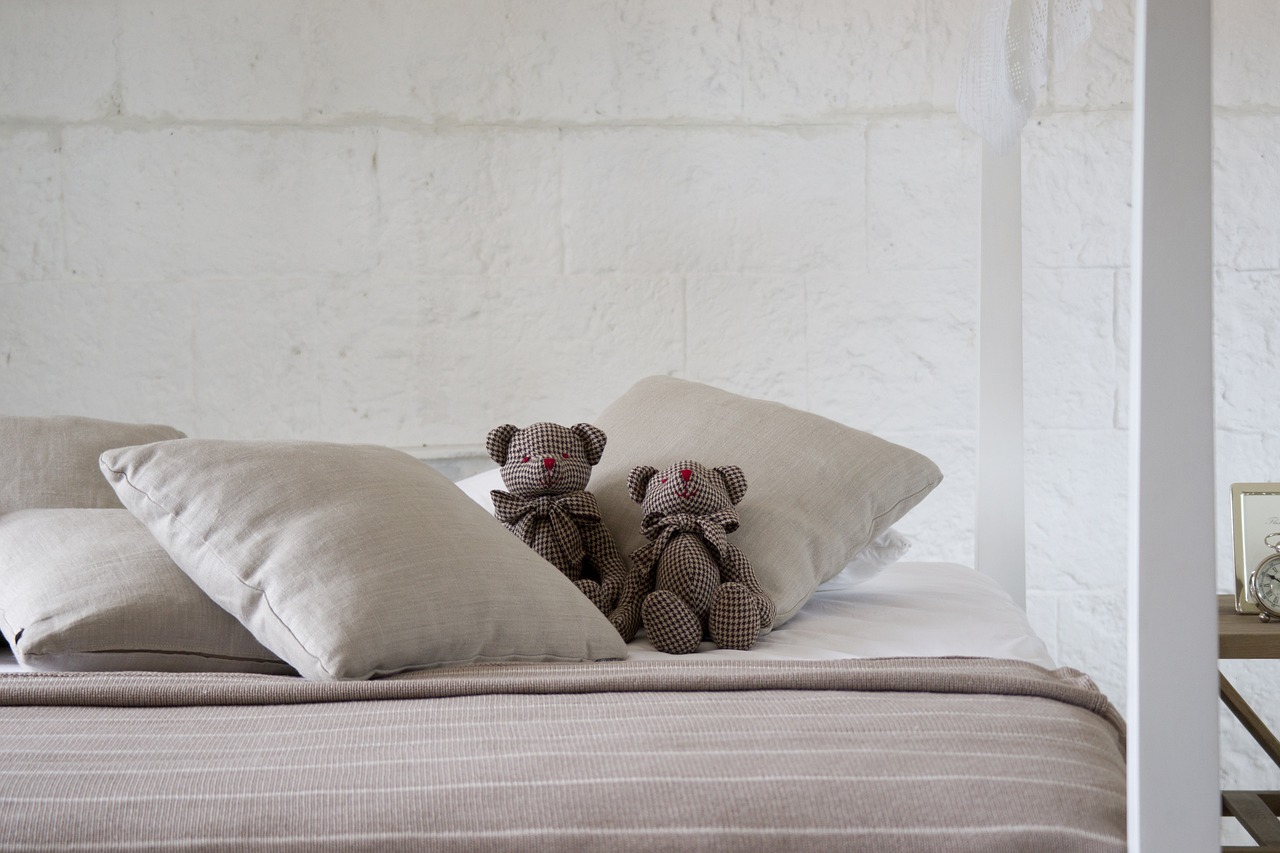
Exploring Patchwork Quilting
Patchwork quilting is like telling a story with fabric, where every piece has its own unique tale to share. Imagine a quilt that not only keeps you warm but also sparks conversations and evokes memories. This technique involves sewing together various fabric pieces to create intricate designs that are as much about creativity as they are about craftsmanship. Whether you’re a novice or a seasoned quilter, diving into patchwork can be an exhilarating experience. It allows you to play with colors, patterns, and textures, transforming simple materials into stunning works of art.
One of the most exciting aspects of patchwork quilting is the endless array of patterns available. Each pattern has its own charm and can dramatically change the overall aesthetic of your quilt. For instance, the Nine-Patch pattern, which consists of nine squares sewn together, offers a classic look that’s perfect for beginners. On the other hand, the Log Cabin pattern, which features strips of fabric arranged in a log cabin design, adds depth and complexity. As you explore these patterns, you'll discover how they can influence the feel and style of your quilt.
Let’s take a closer look at some popular patchwork patterns:
- Nine-Patch: A simple yet versatile design that can be easily customized.
- Log Cabin: Known for its geometric beauty, this pattern creates a stunning visual effect.
- Flying Geese: This pattern gives the illusion of movement and is great for adding dynamic elements.
- Half-Square Triangles: A favorite among quilters for its versatility and the variety of designs that can be achieved.
Each of these patterns brings something unique to the table, and experimenting with them can lead to exciting results. The beauty of patchwork quilting lies in its adaptability; you can mix and match these patterns to create a quilt that truly reflects your personality.
When it comes to fabric selection, the right choices can make or break your quilt. Understanding color theory is essential; it helps you create harmonious combinations that enhance your quilt's visual appeal. For instance, consider using a color wheel to find complementary colors or analogous colors that sit next to each other on the wheel. This can lead to stunning contrasts or soothing blends, depending on the effect you want to achieve.
Additionally, think about the fabric types you want to use. Cotton is a popular choice for its durability and ease of handling, but don’t shy away from experimenting with other materials like flannel or even silk for unique textures. Mixing fabrics can add depth and interest to your quilt, making it a true masterpiece.
Accurate cutting is crucial in patchwork quilting. Think of it as the foundation of a house; without a solid base, everything else can crumble. To ensure precision, invest in quality cutting tools like a rotary cutter, a self-healing mat, and a clear acrylic ruler. These tools help you achieve clean, straight edges, which is essential for aligning your pieces perfectly. Additionally, always measure twice and cut once—this old adage holds true in quilting!
As you embark on your patchwork quilting journey, remember that the process is just as important as the final product. Enjoy the rhythm of sewing, the joy of selecting fabrics, and the satisfaction of creating something uniquely yours. Whether you're making a quilt for yourself or as a gift, each stitch is a step towards a beautiful creation that tells your story.
Q: What is the best fabric to use for patchwork quilting?
A: Cotton is the most popular choice due to its durability and ease of handling. However, you can also experiment with flannel, silk, or even denim for unique textures.
Q: How can I improve my cutting accuracy?
A: Invest in quality cutting tools like a rotary cutter and a clear acrylic ruler. Always measure twice before cutting to ensure precision.
Q: What are some beginner-friendly patchwork patterns?
A: Patterns like the Nine-Patch and Log Cabin are great for beginners, as they are simple yet versatile.
Q: Can I mix different fabric types in one quilt?
A: Absolutely! Mixing fabrics can add depth and interest to your quilt. Just be mindful of how different materials will behave together.

Types of Patchwork Patterns
When diving into the world of patchwork quilting, one of the most exciting aspects is the variety of patterns available. Each pattern tells a story and contributes uniquely to the overall aesthetic of a quilt. Some patterns are simple and classic, while others are intricate and modern. Let's explore a few popular types of patchwork patterns that can inspire your next quilting project.
The Nine-Patch is perhaps one of the most recognized patterns in quilting. As the name suggests, it consists of nine squares arranged in a 3x3 grid. This pattern is not only easy to sew, making it perfect for beginners, but it also offers endless possibilities for creativity. By varying the colors and fabrics used in each square, quilters can create stunning designs that can range from traditional to contemporary.
Another beloved pattern is the Log Cabin. This design features strips of fabric sewn around a central square, creating a visually striking effect. The Log Cabin pattern can be arranged in various ways, such as the traditional light and dark layout or more modern interpretations using bright colors. The beauty of this pattern lies in its versatility; it can adapt to any quilting style, whether you're aiming for a rustic or a vibrant look.
For those who enjoy a bit of complexity, the Flying Geese pattern is a fantastic choice. This pattern consists of triangles that form a series of “geese” flying in a row. The geometric shapes create a dynamic movement across the quilt, making it a favorite among quilters who want to add a touch of elegance to their work. Combining different colors and fabrics can elevate this pattern, allowing for unique interpretations.
Lastly, let’s not forget about the Star Patterns. These patterns can vary widely, from simple five-pointed stars to more intricate designs like the Lone Star. Star patterns are particularly popular for their ability to create a sense of depth and dimension in a quilt. The use of contrasting colors can highlight the star shapes, making them pop against the background fabric.
In summary, the world of patchwork patterns is rich and varied. Whether you choose the simplicity of the Nine-Patch, the elegance of the Log Cabin, the movement of the Flying Geese, or the beauty of Star Patterns, each design offers a unique opportunity for creativity. As you experiment with these patterns, remember that the key to a stunning quilt lies in the combination of colors, fabrics, and your personal touch.
If you're looking to get started with any of these patterns, consider gathering a selection of fabrics that speak to you. Play around with different combinations and layouts before committing to a final design. The journey of quilting is just as rewarding as the finished product!
- What is the easiest patchwork pattern for beginners? The Nine-Patch is often recommended for beginners due to its simple design and ease of assembly.
- Can I use different fabric types for patchwork quilting? Absolutely! While cotton is the most common fabric used, you can experiment with other materials like flannel and wool for different textures.
- How do I choose colors for my patchwork quilt? Consider using a color wheel to help select complementary colors, or choose a theme that reflects your personal style.
- What tools do I need for accurate cutting in patchwork quilting? A rotary cutter, cutting mat, and quilting ruler are essential for achieving precise cuts.
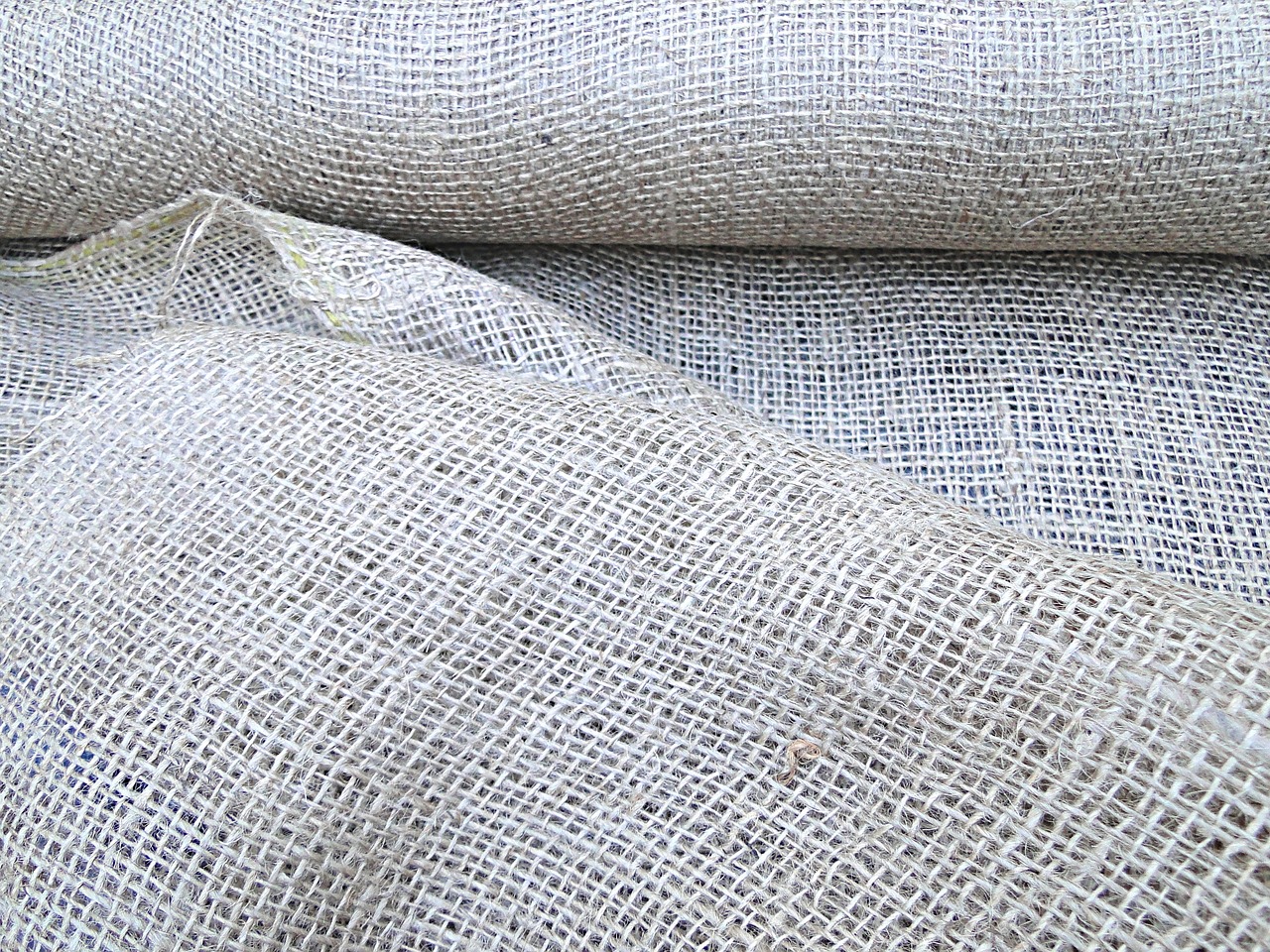
Choosing Fabrics for Patchwork
When it comes to patchwork quilting, the choice of fabrics can make or break your project. Imagine walking into a fabric store, surrounded by a kaleidoscope of colors and textures. It can be overwhelming, right? But fear not! With a little guidance, you can confidently select fabrics that not only look great together but also enhance the overall aesthetic of your quilt.
First and foremost, understanding color theory is essential. Colors can evoke emotions and set the mood of your quilt. For instance, warm colors like reds and yellows can create a cozy feel, while cool colors like blues and greens can bring a sense of calm. When choosing fabrics, consider creating a color palette that resonates with you. A good rule of thumb is to select a main color and then choose complementary colors to add depth and interest. This can be achieved through:
- Monochromatic Schemes: Using different shades of the same color.
- Analogous Colors: Selecting colors that are next to each other on the color wheel.
- Contrasting Colors: Using colors that are opposite each other on the wheel for a bold look.
Next, think about the pattern and scale of the fabrics. Mixing various patterns can add dynamism to your quilt, but it’s crucial to balance them. For example, pairing a large floral print with a smaller polka dot can create visual harmony. A helpful tip is to keep the scale of the patterns in mind: larger prints can dominate a quilt, while smaller prints can serve as a wonderful backdrop. Experimenting with different combinations can lead to surprising and delightful results!
Texture is another important factor. Different fabrics can add unique dimensions to your quilt. For instance, combining smooth cotton with textured fabrics like flannel or linen can create a tactile experience. Consider how these textures will feel against each other and how they will contribute to the quilt's overall look. Remember, the goal is to create a quilt that is not only visually stunning but also inviting to touch!
Lastly, don’t shy away from incorporating prints and solids. Solids can provide a necessary break from busier patterns and help highlight intricate designs. You might want to use a solid fabric for the borders or sashing, which can frame your patchwork beautifully. The key is to find a balance that speaks to your personal style.
In summary, choosing fabrics for patchwork quilting is an art in itself. By understanding color theory, considering pattern and scale, exploring different textures, and mixing prints with solids, you can create a quilt that is not only beautiful but also a true reflection of your creativity. So, grab those fabric swatches, let your imagination run wild, and start piecing together your masterpiece!
Q1: How do I know which fabrics work well together?
A1: Start with a color palette that resonates with you, and consider using a mix of patterns and textures. Play around with different combinations until you find what feels right!
Q2: Can I use non-cotton fabrics for patchwork quilting?
A2: Absolutely! While cotton is a popular choice, you can experiment with other materials like flannel, wool, or even silk to create unique textures and styles.
Q3: What is the best way to cut fabric for patchwork?
A3: Using a rotary cutter and a cutting mat will give you precise cuts. Make sure to measure twice and cut once to avoid mistakes!
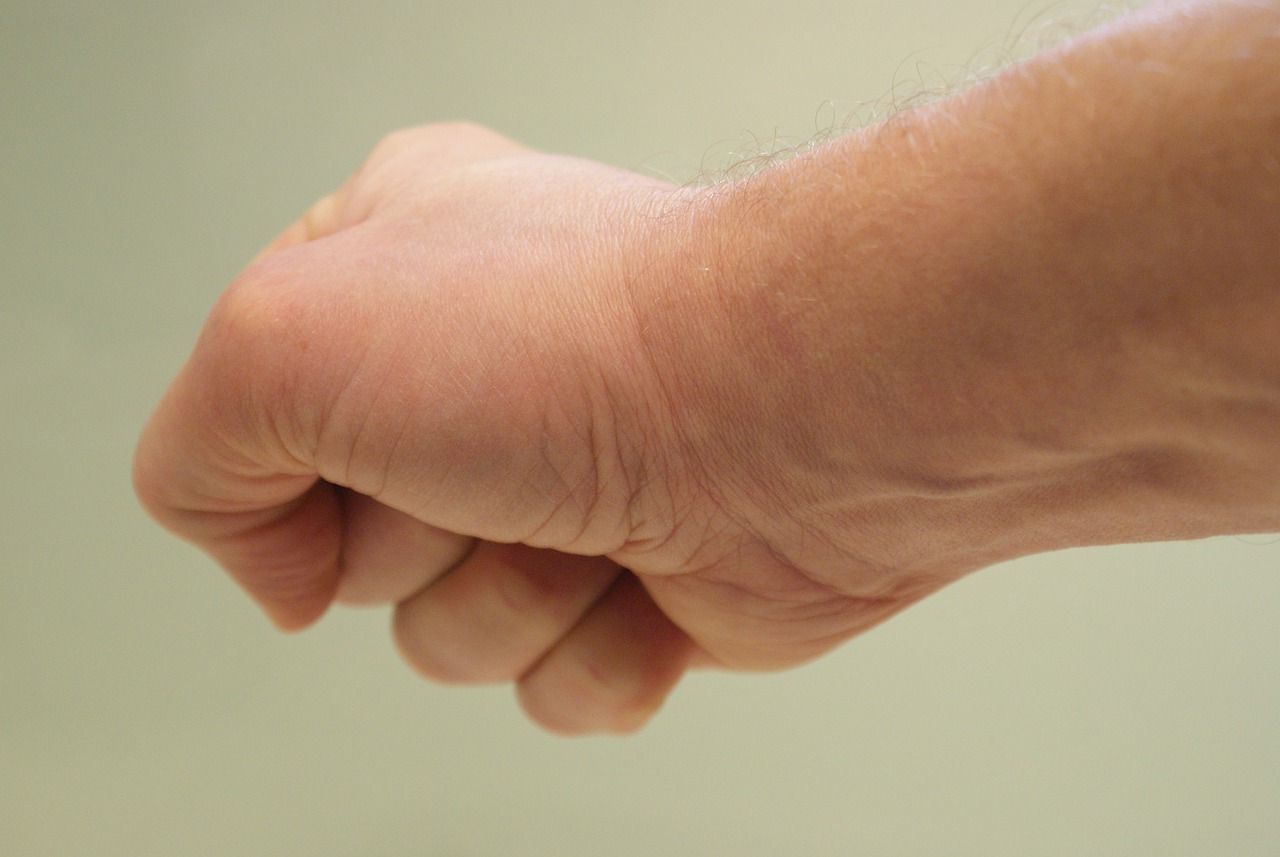
Techniques for Accurate Cutting
When it comes to quilting, accuracy in cutting is paramount. Imagine trying to assemble a puzzle with pieces that don’t quite fit together; it can be frustrating and lead to a less-than-perfect final product. To avoid this, let’s explore some essential techniques and tools that will help you achieve precision in your fabric cutting.
First and foremost, investing in a high-quality rotary cutter is a game changer. Unlike scissors, a rotary cutter allows you to make clean, straight cuts with minimal effort. Pair it with a self-healing cutting mat and a clear acrylic ruler, and you’ll have a cutting station that feels like a professional workshop. The ruler should be marked with both inches and centimeters, which can help you measure accurately and make adjustments on the fly.
Another technique that can enhance your cutting accuracy is the stacking method. By layering multiple fabric pieces together, you can cut several pieces at once, saving both time and energy. However, be sure to use fabrics of similar thickness to prevent uneven cuts. When stacking, always start with the largest pieces at the bottom and work your way up to the smallest. This ensures that your top layers remain stable and don’t shift during cutting.
Furthermore, consider using a fabric weight or pins to hold your fabric in place. This is especially useful for slippery fabrics that tend to move around. A fabric weight can be as simple as a small stone or a purpose-made weight designed specifically for this task. If you prefer pins, just be cautious to remove them before cutting to avoid any accidents.
Lastly, remember that practice makes perfect. The more you cut, the better you will become at judging distances and angles. Don’t be afraid to practice on scrap fabric until you feel comfortable with your techniques. A well-practiced quilter can cut with the precision of a surgeon, ensuring that every piece fits together seamlessly.
In summary, accurate cutting is a skill that can be honed with the right tools and techniques. From using a rotary cutter and ruler to stacking fabrics and employing weights, these strategies will help you create quilts that not only look beautiful but are also structurally sound. So grab your tools, practice, and enjoy the process of cutting your way to quilting success!
- What is the best tool for cutting fabric? A rotary cutter is generally considered the best tool for cutting fabric due to its precision and ease of use.
- How can I prevent my fabric from slipping while cutting? Using fabric weights or pins can help keep your fabric in place, ensuring more accurate cuts.
- Is it necessary to use a cutting mat? Yes, a cutting mat protects your surfaces and extends the life of your rotary cutter blade.
- Can I cut multiple layers of fabric at once? Yes, stacking similar thickness fabrics can save time, but ensure they are aligned properly to maintain accuracy.

Advanced Quilting Techniques
Once you've mastered the basic techniques of quilting, it's time to dive into the exciting realm of advanced quilting techniques. These methods not only elevate your quilting game but also allow you to express your creativity in ways you might not have imagined. One of the most thrilling techniques is free-motion quilting. This method lets you take control of the sewing machine, moving the fabric in any direction you desire. Imagine painting with thread, creating beautiful swirls and intricate designs that bring your quilt to life! It’s like dancing with your fabric, and the result can be absolutely stunning.
Another fascinating technique to explore is paper piecing. This method is perfect for achieving precise shapes and angles that might be challenging with traditional piecing. You start by sewing fabric to a paper template, which acts as your guide. Once you’ve finished, you simply tear away the paper, revealing a beautifully crafted piece. It’s akin to building a puzzle, where each piece fits perfectly into place, resulting in a quilt that boasts sharp lines and intricate patterns.
For those who love a challenge, consider diving into appliqué. This technique involves sewing one fabric piece onto another, creating beautiful designs that can be as simple or as complex as you desire. Whether you’re layering fabrics to create a floral motif or adding whimsical shapes like stars and hearts, appliqué allows for a personal touch that can make your quilt truly unique. Think of it as adding a splash of paint to a canvas; it gives your quilt character and flair.
Let’s not forget about trapunto, a technique that adds dimension to your quilts. By creating raised areas in your quilt, trapunto gives a three-dimensional effect that can make your designs pop. It’s like giving your quilt a heartbeat, adding texture and interest that draws the eye. This technique may require a bit more time and effort, but the results are undeniably breathtaking.
Incorporating these advanced techniques into your quilting projects can feel overwhelming at first, but with practice, you’ll find your rhythm. Just remember, quilting is as much about the journey as it is about the finished product. Embrace the learning process, and don’t hesitate to experiment! The beauty of quilting lies in its versatility—there are no hard and fast rules. So, grab your fabric, let your imagination run wild, and enjoy the art of quilting!
- What is free-motion quilting? Free-motion quilting is a technique where you move the fabric freely under the needle to create intricate designs.
- How do I start with paper piecing? Begin by selecting a paper template, then sew fabric pieces to the paper following the pattern. Tear away the paper once complete.
- Can I use any fabric for appliqué? Yes, you can use various fabrics, but make sure they are compatible in terms of weight and texture for the best results.
- What is trapunto? Trapunto is a quilting technique that creates a raised effect in certain areas of the quilt by adding extra batting or stuffing.
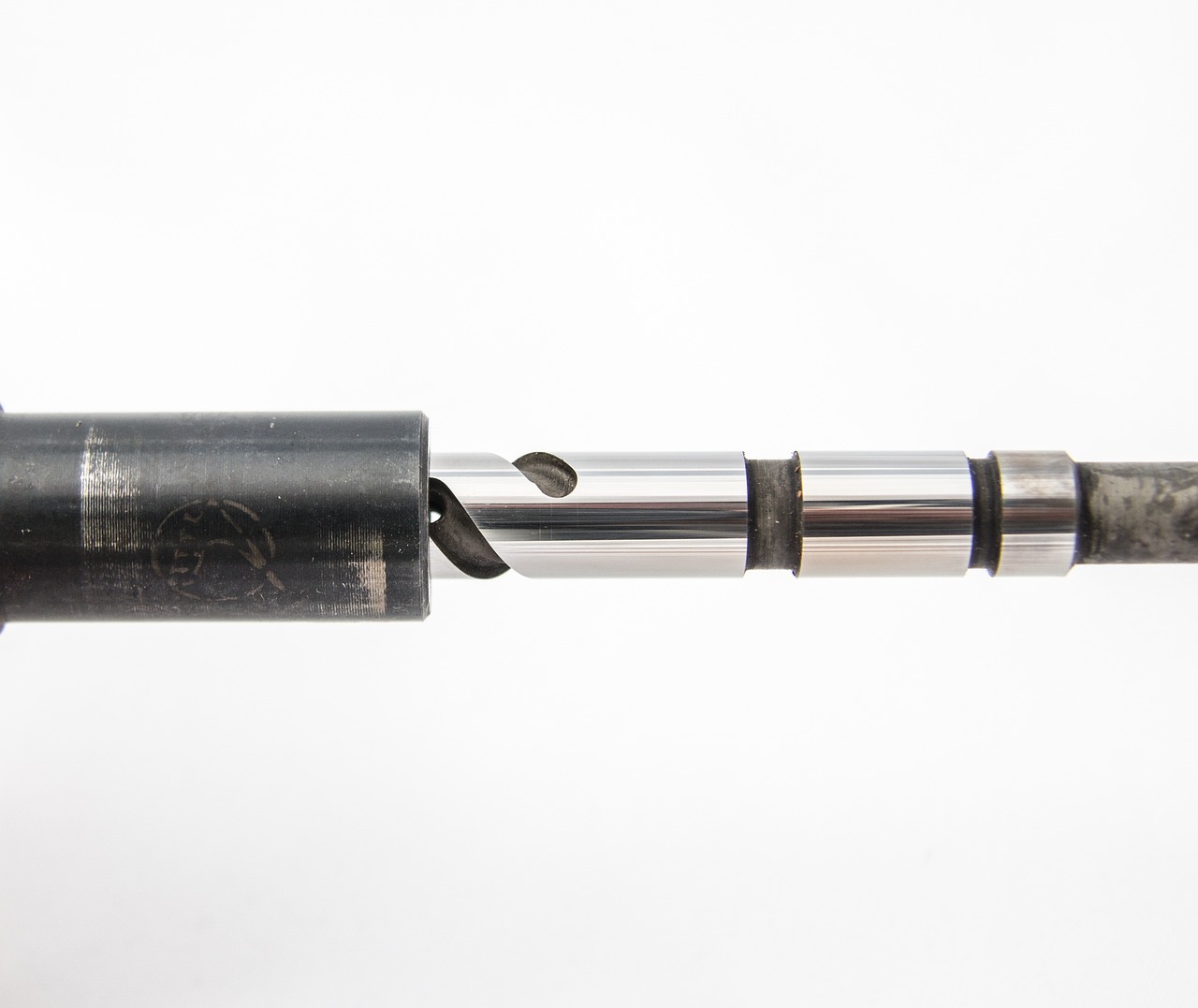
Quilting with Different Materials
When you think of quilting, cotton fabric might be the first material that comes to mind. However, the world of quilting is rich and diverse, allowing you to explore a variety of materials that can add unique textures and styles to your creations. From the cozy warmth of wool to the soft drape of flannel, each material brings its own character to the quilt-making process. Understanding these materials can elevate your quilting game and inspire more creativity in your projects.
Wool, for example, is a fantastic option for quilts intended for colder climates. Its natural insulating properties keep you warm without being overly heavy. Plus, wool has a delightful texture that can add depth to your quilt. On the other hand, flannel is another excellent choice, especially for baby quilts or winter throws. Its softness makes it incredibly cozy, and it comes in a variety of fun prints that can appeal to different tastes.
But how do you choose the right material for your quilt? Here are some factors to consider:
- Purpose: Think about where the quilt will be used. Is it for a baby, a bed, or perhaps a decorative wall hanging? This will guide your material choice.
- Season: For winter quilts, opt for warmer materials like wool or heavier cotton blends. For summer, lighter cottons or linens are more appropriate.
- Care: Some fabrics require special care. For instance, wool might need to be dry-cleaned, while cotton can often be machine-washed.
Additionally, mixing different materials can yield stunning results. Imagine a quilt that combines cotton patches with a flannel backing! The contrast not only enhances the visual appeal but also adds a tactile experience that can be delightful to touch. However, when mixing materials, be mindful of how they behave during washing and drying, as some fabrics shrink or stretch differently than others.
Now, let’s talk about batting, which is the layer between the quilt top and backing. The choice of batting can significantly affect your quilt's warmth and drape. Here’s a quick overview of some common types of batting:
| Type of Batting | Material | Best For |
|---|---|---|
| Cotton | 100% cotton | General use, soft drape |
| Polyester | 100% polyester | Durability, lightweight |
| Wool | 100% wool | Warmth, loft |
| Blend | Cotton/polyester blend | Versatility, ease of care |
Choosing the right batting is essential because it affects not only the quilt's warmth but also how it behaves when quilted. For example, wool batting provides excellent loft and warmth, making it perfect for winter quilts, while cotton batting is breathable and great for year-round use. Always consider your project's specific needs before making a decision.
As you embark on your quilting journey, don’t shy away from experimenting with different materials. Each fabric can tell a story, evoke an emotion, or simply bring joy to your life. So gather your supplies, unleash your creativity, and let your quilts reflect your unique style!
1. Can I mix different materials in a quilt?
Absolutely! Mixing materials can create interesting textures and visual contrasts. Just be mindful of how different fabrics behave when washed.
2. What is the best batting for a summer quilt?
For summer quilts, lightweight cotton batting is often recommended for its breathability and soft feel.
3. How do I care for wool quilts?
Wool quilts typically require dry cleaning. Always check the care instructions on your specific fabric to maintain its quality.
4. What are some good fabric combinations for beginners?
Start with cotton fabrics in coordinating colors or patterns. A simple two-color quilt can be a great project to begin with!
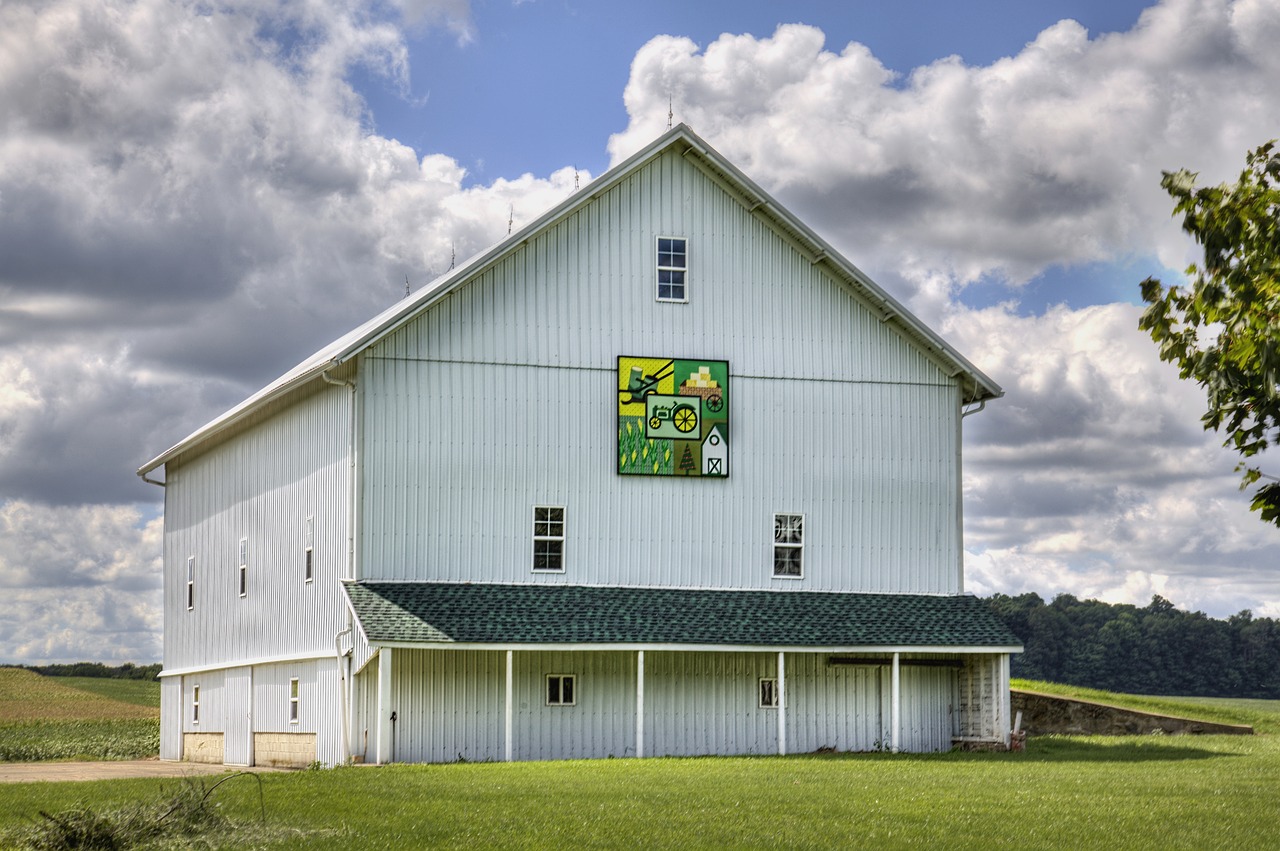
Choosing the Right Batting
When it comes to quilting, the choice of batting is often an overlooked but crucial aspect that can significantly impact the overall quality and feel of your quilt. Batting serves as the insulating layer between the quilt top and backing, providing warmth and adding dimension. But how do you choose the right batting for your project? It's not just about grabbing the first roll you see at the fabric store. Let's dive into the different types of batting available and what you should consider before making your selection.
First, it's essential to understand the various materials that batting can be made from. The most common types include cotton, polyester, wool, and blends. Each material offers distinct properties:
| Type of Batting | Properties | Best For |
|---|---|---|
| Cotton | Natural fiber, breathable, soft, and drapes well. | Traditional quilts, hand quilting. |
| Polyester | Durable, resistant to creasing, and easy to care for. | Machine quilting, quilts that need to withstand wear and tear. |
| Wool | Warm, lightweight, and has a natural loft. | Cold weather quilts, projects needing extra warmth. |
| Blends | Combines properties of different fibers for a balanced feel. | Versatile projects, when you want the best of both worlds. |
Now, let’s talk about the loft of the batting. Loft refers to the thickness and fluffiness of the batting. High-loft batting creates a puffy, quilted look, while low-loft batting gives a flatter, more contemporary appearance. Depending on your design and the quilting technique you plan to use, you may prefer one over the other. For example, if you're hand quilting, a low-loft cotton batting might be your best bet, as it allows for easier needle penetration. On the other hand, if you're using a longarm machine, a high-loft polyester batting could give your quilt that extra pop.
Another important factor to consider is the batting's shrinkage. Some batting is pre-shrunk, while others will shrink once washed. This can affect the final size and look of your quilt, so it's wise to read the packaging carefully. If you're aiming for a vintage, crinkled look, you might want to choose a batting that shrinks. However, if you prefer a smooth finish, look for a batting that is designed to resist shrinkage.
Finally, don't forget about the care instructions for your batting. Different materials have different washing and drying requirements, which can affect the longevity of your quilt. For instance, wool batting may require special care to maintain its shape, while polyester can often be tossed in the washer and dryer without worry. Always check the manufacturer’s guidelines to ensure your quilt remains in pristine condition for years to come.
In summary, choosing the right batting is a blend of understanding your project's needs and the characteristics of the available materials. Whether you opt for cotton, polyester, wool, or a blend, each choice will contribute to your quilt's final look and feel. So, take your time, do your research, and you'll find the perfect batting that elevates your quilting experience!
- What is the best batting for a beginner quilter? Cotton batting is often recommended for beginners due to its ease of use and versatility.
- Can I mix different types of batting in one quilt? Yes, but be cautious as different materials may react differently when washed.
- How do I prevent my batting from bunching? Make sure to baste your quilt layers securely before quilting to prevent shifting.
- Is it necessary to pre-wash my batting? Pre-washing is not typically necessary, but it can help reduce shrinkage for some types of batting.

Incorporating Embellishments
When it comes to quilting, embellishments can be the cherry on top that transforms a simple quilt into a stunning masterpiece. Think of embellishments as the jewelry of your quilt; just like a necklace can elevate an outfit, the right embellishments can elevate your quilt's design. Whether you want to add texture, depth, or a splash of color, there are countless ways to incorporate these decorative elements into your projects.
One of the most popular ways to enhance a quilt is through embroidery. This technique not only adds a personal touch but also allows you to tell a story or convey a theme through your stitches. Imagine a quilt adorned with delicate floral patterns or whimsical animals, all brought to life with colorful threads. You can choose to hand-embroider or use a sewing machine, depending on your skill level and the look you want to achieve.
Another exciting option is to use beads and sequins. These tiny embellishments can catch the light and add an unexpected sparkle to your quilt. When incorporating beads, consider using them sparingly to avoid overwhelming the design. A few strategically placed beads can create a stunning focal point, drawing the eye and adding a touch of glamour. Just remember to secure them well, as you don’t want them to come loose after a few washes!
Appliqué is yet another fantastic way to add dimension and interest to your quilt. This technique involves sewing a piece of fabric onto the quilt’s surface, which can create beautiful layered effects. You can use a contrasting fabric to make the appliqué stand out or choose complementary colors for a more subtle look. The possibilities are endless! You could even create themed appliqués, like autumn leaves or holiday motifs, to reflect the seasons or special occasions.
When considering embellishments, it's essential to think about the overall theme and color scheme of your quilt. Here are a few tips to help you choose the right embellishments:
- Match the Mood: Choose embellishments that complement the style of your quilt. For example, vintage quilts may benefit from lace or buttons, while modern quilts can shine with bold beads or geometric shapes.
- Color Coordination: Use colors that harmonize with your quilt’s palette. This doesn’t mean everything has to match perfectly; sometimes, a contrasting embellishment can create a stunning effect.
- Texture Variety: Incorporating different textures can add depth to your quilt. Consider mixing smooth fabrics with rougher textures like burlap or felt.
Lastly, don’t forget about the functional aspects of your quilt. While embellishments can be beautiful, they should not compromise the quilt's usability. For example, if you’re adding beads, make sure they are securely attached and won’t scratch or irritate the skin. Always consider how your embellishments will hold up over time, especially after repeated washing.
Incorporating embellishments into your quilting projects is all about creativity and personal expression. Whether you choose to go big with bold designs or keep it simple with subtle touches, the key is to have fun and let your personality shine through. Remember, your quilt is a reflection of you, so make it as unique and beautiful as you are!
As you embark on your quilting journey, you might have some questions about incorporating embellishments. Here are a few common inquiries:
- Can I use any type of fabric for appliqué? Yes! You can use cotton, felt, or even denim, depending on the look you want to achieve.
- How do I secure beads to my quilt? It's best to use a strong thread and sew them in place securely. Consider using a small knot to hold them in position.
- Will embellishments make my quilt less washable? Some embellishments can be delicate, so always check the care instructions and consider how they will hold up in the wash.
Frequently Asked Questions
- What are the basic techniques I need to know for quilting?
To get started with quilting, it's essential to master a few basic techniques. These include piecing, which involves sewing together fabric pieces, appliqué, where you attach smaller pieces of fabric onto a larger piece, and the actual quilting process that stitches layers together. Once you get comfortable with these techniques, you'll be ready to explore more advanced methods!
- What is patchwork quilting and how do I choose the right fabrics?
Patchwork quilting is all about sewing together different fabric pieces to create unique designs. When selecting fabrics, consider using a combination of colors and patterns that complement each other. A good rule of thumb is to choose a focal fabric and then select others that either match or contrast beautifully with it. This will help your quilt stand out!
- What are some popular patchwork patterns?
There are several classic patchwork patterns that quilters love, such as the Nine-Patch, which is simple yet effective, and the Log Cabin, known for its intricate design. Each pattern has its own charm and can significantly influence the overall look of your quilt. Experimenting with different patterns can be a fun way to find your personal style!
- How can I ensure accurate cutting for my quilt pieces?
Accurate cutting is crucial for a successful quilt. To achieve precision, invest in a good rotary cutter, a cutting mat, and a clear ruler. Always double-check your measurements before cutting, and consider using templates for complex shapes. Taking the time to cut accurately will save you headaches down the line!
- What advanced techniques can I try once I master the basics?
Once you feel confident with the basics, you can dive into advanced techniques like free-motion quilting, which allows for creative stitching designs, and paper piecing, a method that helps create intricate patterns with precision. These techniques can take your quilting to the next level and unleash your creativity!
- Can I use materials other than cotton for quilting?
Absolutely! While cotton is the most common fabric used in quilting, you can experiment with various materials like wool, flannel, or even silk. Each fabric brings its own unique texture and drape to your quilt, so don't be afraid to mix it up and see what works best for your project!
- How do I choose the right batting for my quilt?
The batting is a key component that affects your quilt's warmth and drape. There are several types of batting available, including cotton, polyester, and wool. When selecting batting, consider the type of quilt you’re making and the desired feel. For instance, cotton batting is great for a soft, breathable quilt, while polyester provides more loft and warmth.
- What are some creative ways to incorporate embellishments into my quilt?
Embellishments like beads, embroidery, or appliqué can add a personal touch to your quilt. Try adding embroidered designs in the corners, or attach small fabric pieces to create a 3D effect. Beads can also be sewn onto your quilt for a bit of sparkle. The key is to let your creativity shine and have fun with it!



















